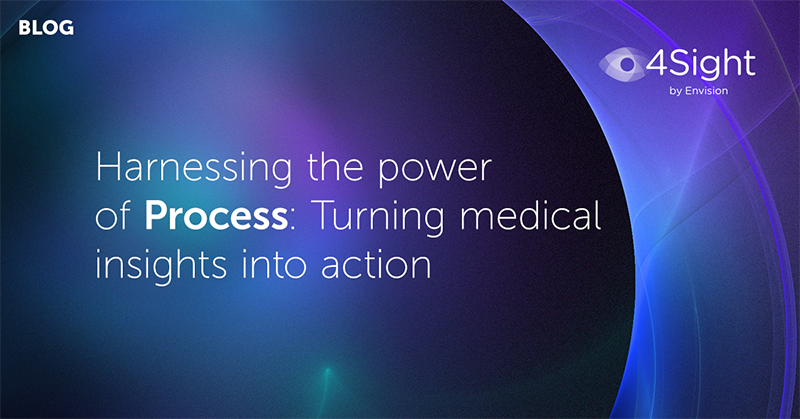The ability to generate and act on medical insights is a critical differentiator in the pharma industry. These insights fuel strategic decision-making, allowing pharma companies to navigate complex challenges and seize opportunities for innovation. While it is no secret that artificial intelligence (AI) is transforming the way data is collected and analyzed, the true power of AI lies in its effective utilization.
Our 4Sight solution aligns the right combination of platform, people, and process to empower teams and achieve outstanding medical affairs performance. As part of our 4Sight series, this blog examines the critical role of process in transforming insights into action.

Building the right process: Steps to success
A well-honed medical insight strategy ensures that insights are collected systematically, analyzed effectively, and, most importantly, translated into actionable initiatives. Without this clear process, insights risk getting lost in the noise or becoming isolated anecdotes rather than drivers of change.
A successful process encompasses several key elements:
- Identifying the questions to ask and critical trigger points
Define the questions, themes, and topics that are of interest, and identify the key moments in the product life cycle that will provide the data necessary for the insights needed.
- Cross-functional collaboration
Once the information required is understood, identify who is responsible for this insight. This may involve colleagues across departments such as commercial, market access, patient engagement, and other relevant teams. Breaking down silos ensures a holistic approach and elevates the importance of insights throughout the organization.
- Pinpointing which stakeholders should be the focus
Identify the key stakeholders who can provide the most valuable insights. Whether they’re healthcare professionals, patient organizations, payer groups, or other entities, engage them actively to gather relevant data.
- Establishing channels for collecting insights
Leverage diverse sources for insights, including field medical teams, medical information channels, advisory boards, social listening, and competitive intelligence.
- Analyzing the collected data
Utilize cutting-edge analytics tools to transform raw data into actionable insights. The real power of data lies in its ability to reveal patterns, trends, and correlations that inform strategic choices.
- Integrating communication for sustainable success
Ensure effective communication throughout the process and share insights with relevant stakeholders across functions to empower teams with actionable information. Adopt a cyclical approach, considering the full life cycle of insights from collection to analysis and action. By informing those responsible for collecting insights about the impact on decision-making, organizations can close the feedback loop, demonstrating and reinforcing the value of the insights strategy.
Demonstrating value: The key to senior buy-in
Gaining senior leadership buy-in is paramount for the success of any medical insights strategy. Their support unlocks resources, drives change, and fosters a data-driven culture that empowers pharma companies to transform valuable insights into impactful action.
Key recommendations for implementation
The insights process should not remain stagnant; it must be scalable, flexible, and responsive to the changing needs and growth of the organization. This involves a commitment to ongoing enhancement, embracing innovation, and regularly evaluating the process to ensure it continues to meet the demands of an expanding team and an ever-growing volume of medical insights. By fostering a culture that values continuous improvement, companies can stay ahead of the curve and maximize the impact of their medical insights strategy.
Success is insight with 4Sight by Envision
Are you interested in discovering the secrets to unlocking outstanding medical affairs performance through AI? Download our eBook now.